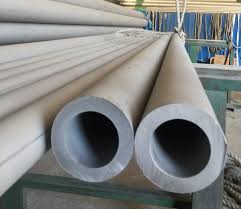316L Stainless Steel Pipes
316L stainless steel is a type of stainless steel that is highly corrosion-resistant and strong. It is a low-carbon version of 316 stainless steel, which is commonly used in the manufacturing of pipes, tubing, and other components that are exposed to corrosive environments. The L in 316L stands for "low carbon," indicating that the carbon content of the alloy is lower than that of other grades of stainless steel, which can help to reduce the risk of corrosion.
316L stainless steel pipes are widely used in the petrochemical, food processing, and pharmaceutical industries due to their excellent corrosion resistance and high strength. They are also commonly used in the construction of marine and offshore structures, as well as in the production of various piping systems.
Properties of 316L Stainless Steel Pipes
Corrosion resistance: 316L stainless steel has excellent corrosion resistance, making it suitable for use in a wide range of corrosive environments. It is resistant to corrosion from a variety of acids, bases, and organic compounds, as well as saltwater and other corrosive environments.
High strength: 316L stainless steel has a high strength-to-weight ratio, making it suitable for use in applications where strength is a concern.
Non-toxic: 316L stainless steel is non-toxic and safe for use in the food processing and pharmaceutical industries.
Low maintenance: 316L stainless steel is easy to maintain and requires minimal cleaning and upkeep.
Applications of 316L Stainless Steel Pipes
Petrochemical industry: 316L stainless steel pipes are resistant to corrosion from various chemicals and are often used in the petrochemical industry for this reason.
Food processing industry: 316L stainless steel pipes are often used in the food processing industry for the transport of food and beverages, as they are non-toxic and corrosion-resistant.
Pharmaceutical industry: 316L stainless steel pipes are used in the pharmaceutical industry for the production and transport of pharmaceutical products, as they are corrosion-resistant and meet the stringent cleanliness requirements of the industry.
Construction: 316L stainless steel pipes are used in the construction of marine and offshore structures, as they are resistant to corrosion from saltwater and other corrosive environments.
Piping systems: 316L stainless steel pipes are used in the production of various piping systems, such as water and gas lines, due to their corrosion resistance and high strength.
Decorative applications: 316L stainless steel pipes are often used in decorative applications, such as handrails and other architectural elements, due to their attractive appearance and corrosion resistance.
There are many suppliers of 316L stainless steel pipes available in the market. Some factors to consider when looking for a supplier of 316L stainless steel pipes include:
- Quality: Make sure to choose a supplier that offers high-quality 316L stainless steel pipes.
- Availability: Check to see if the supplier has the specific sizes and finishes of 316L stainless steel pipes that you need in stock or if they can source them for you.
- Delivery time: Consider the delivery time of the supplier to ensure that you receive the pipes in a timely manner.
- Price: Compare prices from different suppliers to find the best deal.
- Customer service: Choose a supplier that offers good customer service and is willing to answer any questions you may have.
To find 316L Stainless Steel Pipes Suppliers, you can search online directories, such as Thomasnet or MFG, or you can reach out to industry associations, such as the Stainless Steel Pipe and Tube Association, for recommendations. You can also ask for recommendations from other industry professionals or companies that have purchased 316L stainless steel pipes in the past.





Comments